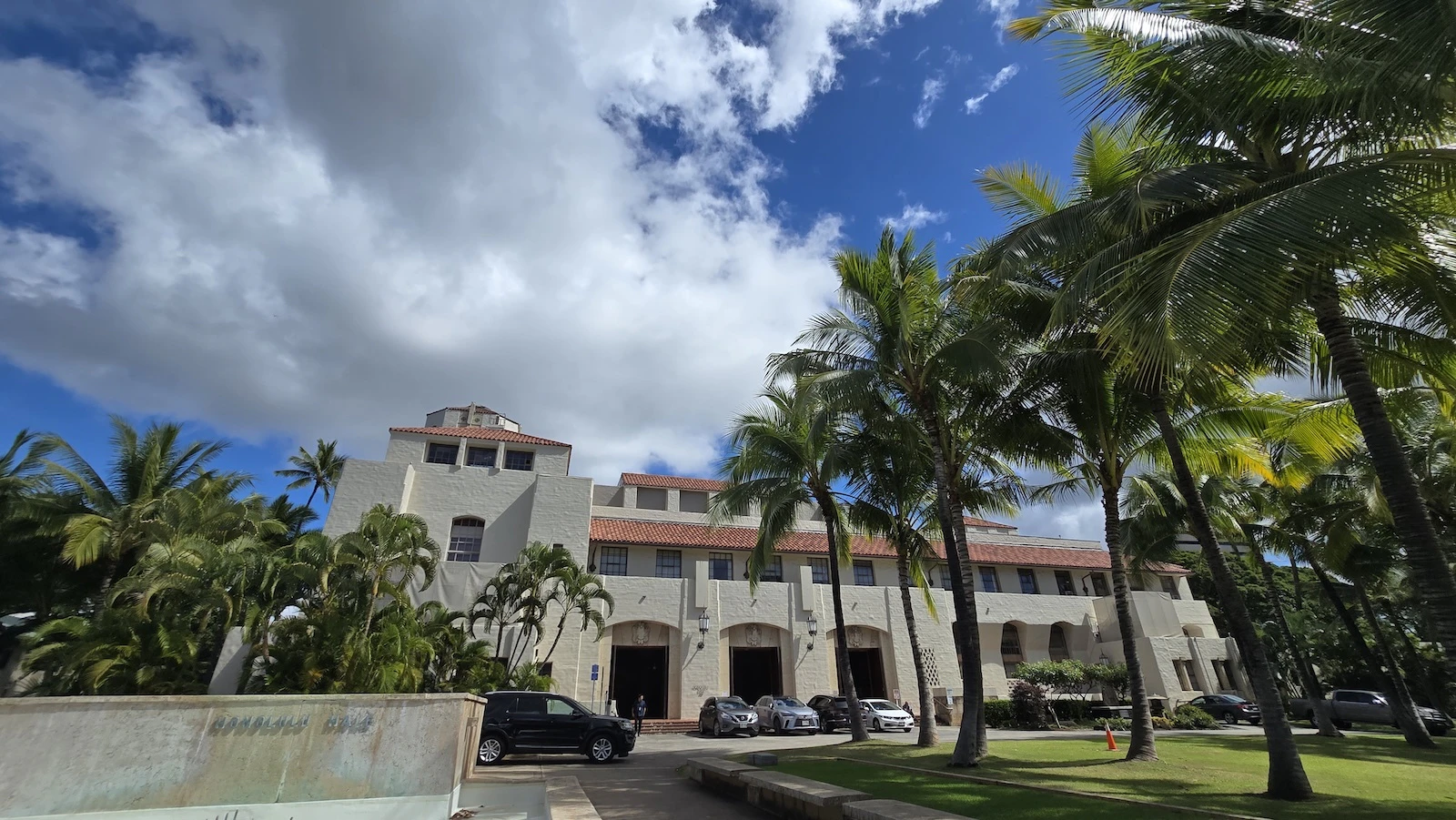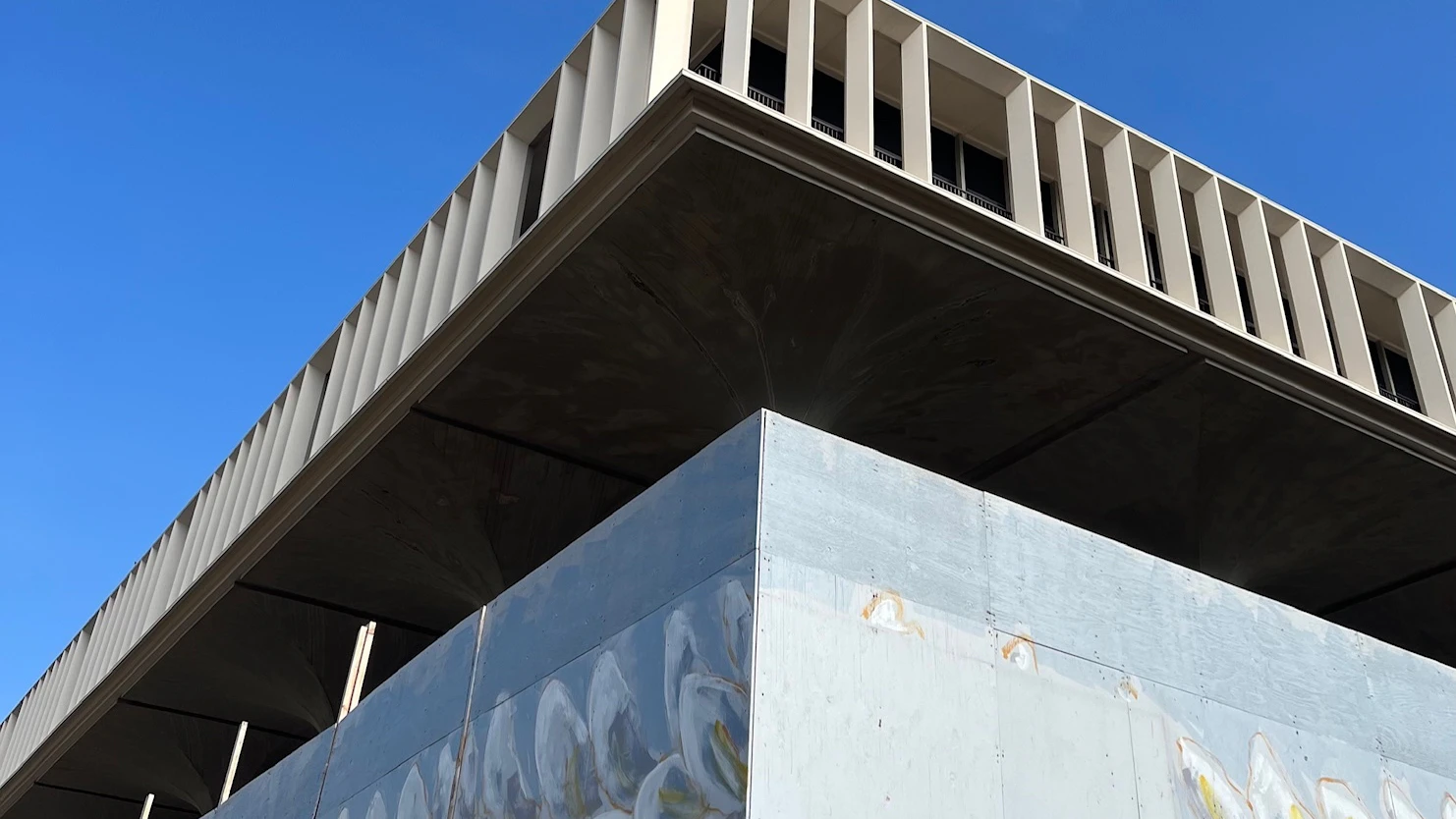I’ve been to any number of Neighborhood Board meetings over the years at which people vent their frustrations over the often worrisome, sometimes disgusting, sometimes terrifying behaviors of homeless people only to be met with silence by government officials. People say they don’t feel safe. Awkward silence. People ask when they’ll get their parks and sidewalks back. Silence. People ask, why isn’t anything happening. At most they get variations of, “It’s really hard. It’s really complicated. You see, the problem is really complex.”
But I’ve never seen that disconnect revealed so sharply as at the recent McCully-Mōʻiliʻili Neighborhood Board meeting in late October. You can watch the entire meeting for yourself here, let me just show you some of the highlights here, to the call out the reality of the situation, as well as the gulf between what people say and the official non-answers they get.
The first notable moment, interestingly, came during a presentation of Ala Wai area park improvements, given by Tara Hirohata, East Honolulu district manager for the City & County of Honolulu Department of Parks & Recreation. Describing improvements to the comfort stations, she mentioned a need for new flooring and looked to a team member to confirm if the city would contract that work out or would do itself. That man — I didn't hear a name for him — comes to the microphone and says:
“We have to try to see if we can do it in-house. The problem is, I guess, the people who use it, sometimes they have to be mindful of when we do renovations ’cause they make all of our hard work look like rubbish. So, you know, in this case, we just renovated this probably like last year and it’s already trashed.”
A theme of the meeting is already emerging. He doesn’t have to specify who trashed the new renovations, everyone knows.
Questions and comments are taken after the city wraps up the presentation. A woman comes up from the audience, says she’s Angie, with an adult 7-a-side soccer league that uses the park. She is, overall, grateful for the planned improvements but has one concern she hasn’t heard addressed yet.
“My other concern with this park is the lighting. We play at 6:30, 7:30, and I find it really dark and a little bit dangerous for a single person just walking to and from my car. I’m always on my phone with my husband and he’s like, ‘Call me when you get out of your car and call me when you go back.’ … I think it should be a little bit more well-lit and safer for us walking to and from [the parking lot.]”
The shared frustrations and anxieties are escalating. First, the facilities are getting wrecked and nothing can be done, it just keeps happening. Now, a woman has stood up to say she feels unsafe in Honolulu and hasn’t heard that concern addressed.
Then we get to the centerpiece presentation of the meeting, a roughly 12-minute presentation by Roy Miyahira, the city’s Director of Homeless Solutions, appointed by Mayor Rick Blangiardi in February and commonly referred to as “the homeless czar.”
He spoke about the Homeless Outreach and Navigation for Unsheltered Persons (HONU) program at Old Stadium Park, a park long plagued by illegal camping and large numbers of homeless. The HONU program had previously been in Kapolei where “we had a lot of success in getting folks who are on the street … and placing at least almost half of these people into next-step type of housing.”
But the going is tougher in McCully-Mo‘ili‘ili.
“I think the population is more transient, because they’re coming from the Waikīkī area. ... We’re finding folks who are from Mo‘ili‘ili and maybe Kaimukī and maybe as far away as Wai‘anae in some cases but we’re finding a lot of folks who are just from the Mainland. We’re not successfully finding them a place to go because most of these folks just want to stay in place. … There are some folks of course who just don’t want rules, who love their lifestyle out on the street and that is fine for this brief moment and so we’re losing about — maybe 40% of those go back to the streets. But so far at the Old Stadium has been successful. … One of the activities there is that we’re trying to get folks in Waikīkī bussed over to do a bit of a tour to see what sheltering does look like. Then we’re taking them to our Iwilei areas where we have IHS, our service provider. We’re having them take a look at what we have to offer.”
Let’s stop and unpack that for a moment. When the homeless czar says my neighborhood’s homeless are coming from Waikīkī, he’s describing the pattern we’ve all seen of the city’s homeless policies simply chasing people from neighborhood to neighborhood. Barely half of the people they’ve touched get off the streets. HONU drives people around to look at the shelters like realtors showing homes for sale and gets few takers.
He described this, nevertheless, as success. The city, he says, is “attacking” the problem with “comprehensive solutions.”
He spoke in an odd mix of buzzwords: “Market segmentation,” from the business world. “Bed utilization,” from the jargon of healthcare. He had a PowerPoint presentation, and discussed numbers in blue boxes and green boxes, described ever-more precise varieties of “beds.” Emergency beds. Detox beds. Transitional housing beds. Mental respite beds. Affordable housing beds.
Pressed by the board to state what all these bed utilization rates really mean, and what the city’s definition of success is, he doesn’t really have an answer.
“Our continuum of care organization, HMIS tracks [bed use],” he says. “As for your question, what defines success — there aren’t too many standards out there that measure success. ... I think measuring homelessness is almost as complex as the people who are homeless. Everyone’s trying to find the right way of measuring it but from my standpoint if someone tells me only 20% move on to next-level or we get 50%, I’d say it’s successful. Maybe not wildly, but it is successful.”
So now let’s unpack that: the city doesn’t have a goal. Not one the homeless czar can confidently and succinctly assert. Instead, he wings it, and off-the-cuff describes success as something like anywhere from half to most of the problem not going away.
Then we get to the most important thing said during the entire meeting. After the city’s homelessness presentation, a petite and soft-spoken woman comes up to the mic.
She says she is Jenny Suzuki and she has been working in Mo‘ili‘ili since 2008. She asks if something can be done about these sweeps that just move the homeless from neighborhood to neighborhood where they end up in the parking lot where she works. Why this concern?
“So this gentleman scratched up my car,” she says, holding up a photo of car damaged far beyond merely scratched. “I went out to go to my car and he was scratching it and when I was out there, he asked me if I had money, I said no. So I left my car, I just walked away, and then he asked me if this was my car and he proceeded to tell me that he was going to put me in my car and rape me.”
She says she filed a police report. She says she knows these problems aren’t easy to fix. “It sounds like you’re working really hard but sometimes, you know, they’re still left in the community for us to wonder how we can help and how we can protect ourselves and our property.”
Hold this in your mind. A woman just stood up say she was threatened with rape by a homeless man.
Here is what the homeless czar had to say about that:
“I think everyone knows that if there’s a situation where there’s a threat that you will all call 911 and an officer should be right there. In fact, where we are at Honu there are two officers there 24 hours a day. Two different shifts, so if you can’t yell out to them across the street, they’ll find officers to come there, a community police team to be there. What we are also have is CORE which people might not know, it’s a Crisis Outreach and Engagement type of team, they’re part of our emergency services team — the folks in the ambulances — but these folks are more equipped to take care of the homeless individuals where there might be a medical aid situation, but now most importantly outreach. So they can be called between 7 and 3 o’clock, Monday through Friday and the phone number is 768-CORE.”
Woman: A homeless man wrecked my car and threatened to rape me.
City: Call 911. Now let me tell you more about our compassionate outreach to … the homeless.
Oblivious. Absolutely oblivious. No acknowledgement of her fear. No empathy. No sense whatsoever that he feels any duty to her as he rushes to elaborate on the sensitive Crisis Outreach Teams standing by to help, not threatened women, but the homeless.
I wish I could say the meeting erupted in outrage at that point, but no, it carried on in the usual formal, borderline boring mode of such meeting, as if nothing particularly important had been revealed. As if an enormous distress signal had not just been sent out in the room. Are we numb? Do we no longer care? Have we given up on expecting any better?
In a very real sense, Jenny Suzuki has no rights, none that are being defended, not by anyone in the room. And I don’t see the ACLU rushing to take her side.
There is a precept in systems thinking, one I’ve mentioned before, that the function of a system is what it does. Not what it’s called. Not what its managers say it does. What it actually does, its real-world activities and outcomes.
What the city’s approach does is take $28 million dollars — up from last year’s $14 million — and spend it tolerating, enabling, and subsidizing the very behaviors we told them we want stopped.
Since the homeless czar himself had to improvise a definition of success on the spot, allow me to restate, in writing, some pretty obvious metrics of success the people have been begging for, for years:
Zero instances of human feces on the sidewalks.
Zero trashed public restrooms.
Zero fear of walking in the park at dinnertime.
And zero, absolutely zero, threats of rape from deranged homeless men.
The gap between that, and what the city says and does, should be a wake-up call for you.
City leaders get to feel compassionate.
We get to feel fear.
A. Kam Napier is editor in chief of Aloha State Daily. His opinions in Pipikaula Corner are his own and not reflective of the ASD team. He can be reached at kam@alohastatedaily.com.
For the latest news of Hawai‘i, sign up here for our free Daily Edition newsletter!
A. Kam Napier can be reached at kam@alohastatedaily.com.





